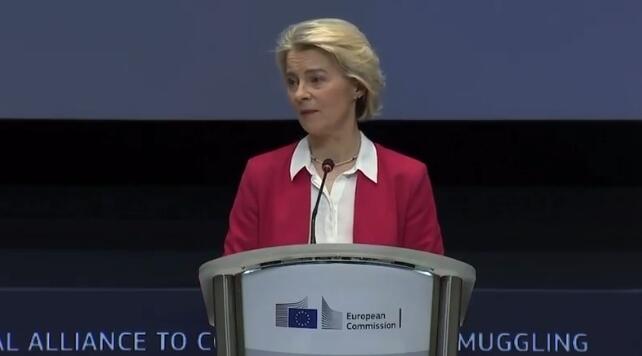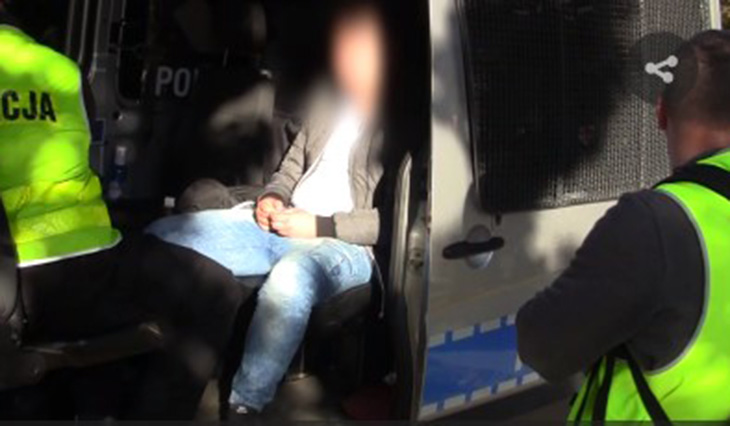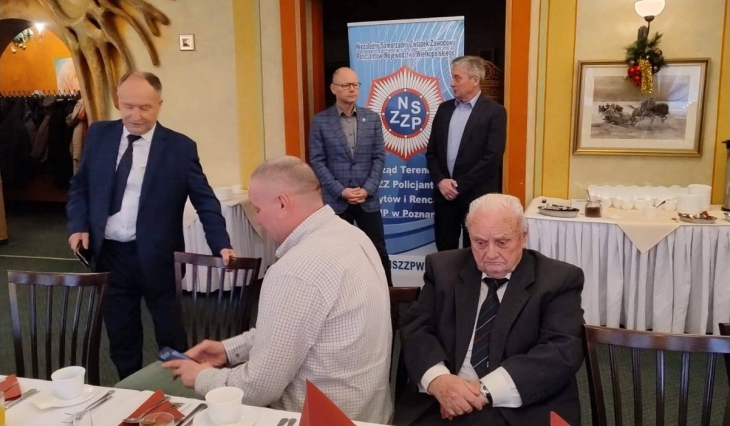
A Tale Of Two Diagrams
Authored by Susan Crabtree via RealClearPolitics,
Are Local Police Deflecting Blame for Assassination Attempt?
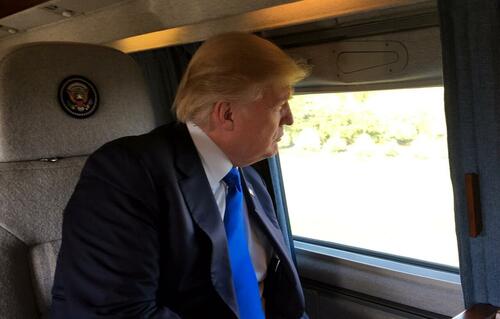
Ahead of Tuesday’s Senate grilling of acting Secret Service Director Ronald Rowe, local Pennsylvania police released a curious diagram from the July 13 rally in Butler that ended in an assassination attempt of former President Trump, the death of rally-goer Corey Comperatore, and injuries of two others.
The aerial photo of the event site, the Butler Farm Show, contained labels for the locations of Butler County and Beaver County police assets, including two local law enforcement “snipers” assigned to cover the American Glass Research building, where shooter Thomas Crooks perched with his AR-15 rifle about 150 yards from Trump’s onstage performance and fired eight bullets at the former president and the crowd.
The diagram includes a narrow red triangle, clearly labeled “Beaver Sniper Line of Sight.” That line of sight is narrowly conscribed between the location of the snipers inside the AGR building to the stage and pointedly does not cover any area of the rooftop where Crooks ran across and then stopped to open fire.
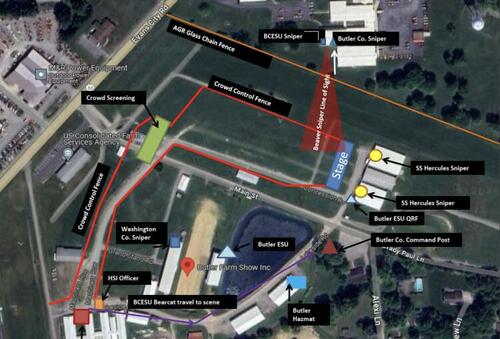 A diagram released by Secret Service Acting Director Ronald Rowe shows an aerial view of the event site. United States Secret Service
A diagram released by Secret Service Acting Director Ronald Rowe shows an aerial view of the event site. United States Secret ServiceThe narrow scope of the red triangle’s purported “line of sight” immediately stood out to some sources within the Secret Service community as purposefully narrowly constructed so as to try to prove that the local snipers never had any portion of the AGR building rooftop in their line of sight and therefore were not at fault for failing to monitor that rooftop.
“Either the red vector was drawn deliberately to avoid responsibility, or it does not include any part of the roof by sheer accident,” one source told RealClearPolitics. “Either way, no one had eyes on the [AGR] roof.”
The shooter likely moved to his left to put a tree between himself and the Secret Service counter snipers who were positioned behind the stage, the source suggested after watching a recently released cell phone video from a rallygoer showing Crooks – in plain view from the stage – running along the rooftop before stopping and firing the eight shots.
But the narrow nature of the red-triangle line of sight doesn’t sit well with many law enforcement sources who asserted that a local police sniper would have had a much wider line of sight perspective that included most of the AGR roof, if sitting close to the window’s edge and constantly looking out.
In other words, he would have seen Crooks, if he had properly done his job, the sources argued.
“If you are handling your window post properly, you would have seen and maybe heard him on the tin roof,” one source remarked. “If local snipers weren’t supposed to cover the roof, then what could possibly have been their role? Covering grass?”
Acting Secret Service Director Rowe, during his Senate testimony on Tuesday, put out a more simplified diagram showing a direct line of sight, or view of the entire AGR rooftop from where the local snipers were positioned.
“Why was the assailant not seen when we were told that building was going to be covered?” Rowe angrily demanded during his Tuesday testimony. “That there had been a face-to-face that afternoon – that our team leads met.”
“This was the view,” Rowe said, pointing to a photo of the AGR building’s rooftop. “These were discussions that were had between the [Secret Service’s] Pittsburgh Field Office, the local counterparts, and everyone supporting that visit that day.”
Rowe went on to describe his visit to the Butler rally site and said he laid down on the AGR rooftop to recreate the line of sight that Crooks had.
“That’s why when I laid in that position, I could not, and I will not, and I cannot understand why there was not better coverage or at least somebody looking at that roofline when that’s where they were posted.”
Lawmakers and Secret Service officials and sources have repeatedly traded accusations over the failure to man or surveil the AGR rooftop in the 20 days since a bullet pierced Trump’s ear and killed Comperatore. Headlines have criticized Rowe for blaming local partners and not fully explaining whether the Secret Service assigned the local snipers to the AGR rooftop, instead of inside the building.
The Secret Service’s shifting narrative for that failure has been the butt of viral memes and jokes after former Secret Service Director Kim Cheatle told ABC News in her only media interview that it wasn’t manned because it was sloped and too dangerous to place Secret Service or local law enforcement on it. Instead, she said, “the decision was made to secure the building from inside.”
In her testimony before the House Oversight Committee nearly a week later, Cheatle was ridiculed over that explanation and several members of Congress said it was the final straw leading to their calls for her resignation, which she submitted one day after the hearing.
Local law enforcement officials have also cited a complete breakdown in communications, with local police who were tracking Crooks siloed from the Secret Service when they are supposed to have interoperability and coordinated communications through a joint command post. (They are never on the same radio frequencies because synchronizing them is technically impossible, but communications are supposed to be coordinated through the command post.)
It’s unclear if that joint command post with representatives from local law enforcement paired with senior Secret Service agents existed that day in its typical form.
Sources in the Secret Service community have privately brushed off accusations from the local police that senior special agents never showed up for a briefing for all local officers assigned to the Farm Show grounds that day. The sources told RCP that they don’t usually provide briefings for every local police officer but the top agents in charge of the site security do conduct a detailed walk-through with top supervisors of local police.
It wouldn’t hurt, some sources suggested, if the Secret Service starts to utilize a written legal agreement signed between the agency and local law enforcement laying out legal liability if one side or the other fails to properly carry out responsibilities.
The agency simply doesn’t have the manpower to fully staff the events themselves, and even if Congress were to immediately provide more funding for additional hires, it takes nearly a year for an agent to get hired and minimally trained.
Sen. Josh Hawley, a Missouri Republican, engaged in a heated exchange with Rowe during his testimony last Tuesday, demanding to know why no one at the agency had been fired yet over the failures.
Rowe, however, did confirm to Hawley that the Secret Service refused drones from local law enforcement, a detail brought to light by whistleblower allegations brought to Hawley’s office. Hawley also has said that whistleblowers told him that local police snipers were assigned to the AGR rooftop but abandoned their post and went inside because it was too hot.
Videos of alarmed rally-goers near the building pointing to Crooks and shouting that he was on the roof several minutes before the shots rang out have only heightened criticism of the Secret Service and law enforcement failures that day.
Pennsylvania State Police Col. Christopher Paris testified before Congress on July 23 that in a meeting before the shooting, “We were told that Butler ESU was responsible for that area, by several Secret Service agents on that walk-through.” Paris was referencing the AGR building.
Paris also said it was his understanding that ESU officers left their post to look for a suspicious person. He added that he was not sure if those officers could have seen Crooks if they had stayed at their post.
Butler County District Attorney Richard Goldinger, who would be responsible for defending at least one of the local snipers’ actions that day if criminal charges were ever brought against the police department, pushed back against Paris’ testimony amid the ongoing finger-pointing between local law enforcement and the Secret Service.
Goldinger said that Paris’ testimony “misstated” local law enforcement’s response after snipers first spotted Crooks 20 minutes prior to the shooting. He said the two local snipers snapped a photo Crooks, who was seated outside the AGR complex, and circulated it along with noting that he was a “suspicious individual” to the “command center” for the Secret Service and the local police.
Goldinger asserted that “at some point,” Crooks got up and moved to the other side of the building, spurring local law enforcement to move within the building in an “attempt to keep eyes” on the suspect.
One of the local snipers, from his location inside the building, noticed Crooks was sitting on a picnic table with a backpack in front of the building. It was only then that one of the officers ran outside to look for Crooks after seeing him run away. The other officer remained in his position on the second floor of the building, according to Goldinger.
The other sniper returned to their post inside the building after failing to locate Crooks outside.
“Neither officer could see Crooks on the other building due to the visual angle they had from their location to Crook’s location,” Goldinger said.
Both officers, he added, were at their predetermined posts when Crooks opened fire.
“Their post was the building,” Goldinger stressed. “While one of the officers did leave the building briefly, it was in response to a suspicious person who had not encountered law enforcement despite them notifying other law enforcement of the suspicious person. Even so, that officer returned to the post, and the post was never left vacant as the other officer remained in the building.”
“To say that these officers left their post is a misstatement,” he added.
“These ESU officers and all of the other ESU officers, volunteered their time to be present for the rally to assist the Secret Service. They performed the duties to which they were assigned.”
Yet, the Pennsylvania State Police told Fox News that the agency stands by Paris’ testimony.
According to a partially redacted timeline in an after-action report from the Beaver County police, the police first observed Crooks at 5:10 p.m., then took photos of him at 5:14 p.m., and then spotted him looking at news feeds on his cell phone, and getting out a range finder. The Butler police then called into “command” about a suspect, communicating the description and the range finder and reporting that Crooks was “lurking around the AGR building.”
At 5:45 p.m., there was a text sent to a Beaver ESU command about the suspect, and the person who sent it was told to relay it to “command,” although it’s unclear whether that means the Secret Service command. It wasn’t until 5:55 p.m. that someone on the local team acknowledged sending it to “command.” In a redacted section of the timeline, there’s mention of a redacted individual or entity asking for the direction of the suspect’s travel at 6 p.m., and it wasn’t until 6:05 p.m. that someone spied Crooks at picnic tables and moving with a backpack on.
Then in line with the timing from 6:06 p.m. to 6:12 p.m., one of the local snipers stationed at the AGR building went downstairs to meet “a patrol” and let them know the suspect was “around the building on the side of the fairgrounds.”
At 6:12 p.m., Crooks fired off the shots, and then at an “unknown time” the shooter was “down,” according to the timeline.
Tyler Durden
Wed, 08/07/2024 – 22:35

